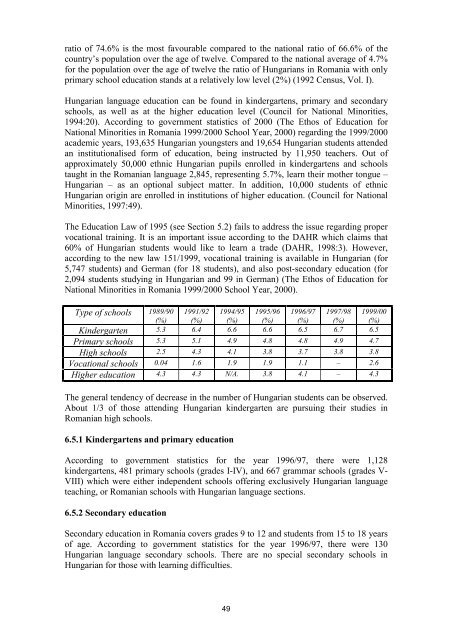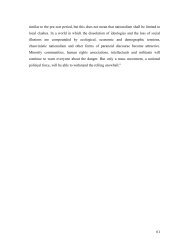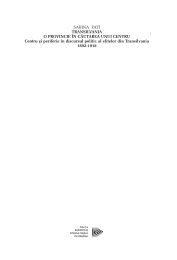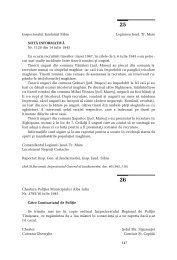Southeast Europe
Southeast Europe
Southeast Europe
Create successful ePaper yourself
Turn your PDF publications into a flip-book with our unique Google optimized e-Paper software.
atio of 74.6% is the most favourable compared to the national ratio of 66.6% of the<br />
country’s population over the age of twelve. Compared to the national average of 4.7%<br />
for the population over the age of twelve the ratio of Hungarians in Romania with only<br />
primary school education stands at a relatively low level (2%) (1992 Census, Vol. I).<br />
Hungarian language education can be found in kindergartens, primary and secondary<br />
schools, as well as at the higher education level (Council for National Minorities,<br />
1994:20). According to government statistics of 2000 (The Ethos of Education for<br />
National Minorities in Romania 1999/2000 School Year, 2000) regarding the 1999/2000<br />
academic years, 193,635 Hungarian youngsters and 19,654 Hungarian students attended<br />
an institutionalised form of education, being instructed by 11,950 teachers. Out of<br />
approximately 50,000 ethnic Hungarian pupils enrolled in kindergartens and schools<br />
taught in the Romanian language 2,845, representing 5.7%, learn their mother tongue –<br />
Hungarian – as an optional subject matter. In addition, 10,000 students of ethnic<br />
Hungarian origin are enrolled in institutions of higher education. (Council for National<br />
Minorities, 1997:49).<br />
The Education Law of 1995 (see Section 5.2) fails to address the issue regarding proper<br />
vocational training. It is an important issue according to the DAHR which claims that<br />
60% of Hungarian students would like to learn a trade (DAHR, 1998:3). However,<br />
according to the new law 151/1999, vocational training is available in Hungarian (for<br />
5,747 students) and German (for 18 students), and also post-secondary education (for<br />
2,094 students studying in Hungarian and 99 in German) (The Ethos of Education for<br />
National Minorities in Romania 1999/2000 School Year, 2000).<br />
Type of schools<br />
1989/90<br />
(%)<br />
1991/92<br />
(%)<br />
1994/95<br />
(%)<br />
49<br />
1995/96<br />
(%)<br />
1996/97<br />
(%)<br />
1997/98<br />
(%)<br />
1999/00<br />
(%)<br />
Kindergarten 5.3 6.4 6.6 6.6 6.5 6.7 6.5<br />
Primary schools 5.3 5.1 4.9 4.8 4.8 4.9 4.7<br />
High schools 2.5 4.3 4.1 3.8 3.7 3.8 3.8<br />
Vocational schools 0.04 1.6 1.9 1.9 1.1 – 2.6<br />
Higher education 4.3 4.3 N/A. 3.8 4.1 – 4.3<br />
The general tendency of decrease in the number of Hungarian students can be observed.<br />
About 1/3 of those attending Hungarian kindergarten are pursuing their studies in<br />
Romanian high schools.<br />
6.5.1 Kindergartens and primary education<br />
According to government statistics for the year 1996/97, there were 1,128<br />
kindergartens, 481 primary schools (grades I-IV), and 667 grammar schools (grades V-<br />
VIII) which were either independent schools offering exclusively Hungarian language<br />
teaching, or Romanian schools with Hungarian language sections.<br />
6.5.2 Secondary education<br />
Secondary education in Romania covers grades 9 to 12 and students from 15 to 18 years<br />
of age. According to government statistics for the year 1996/97, there were 130<br />
Hungarian language secondary schools. There are no special secondary schools in<br />
Hungarian for those with learning difficulties.









